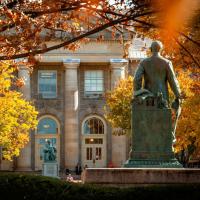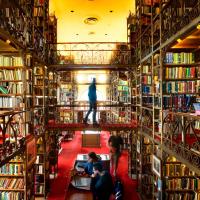
 Department Homepage
The College of Arts & Sciences
Department Homepage
The College of Arts & Sciences
Provost’s seminar celebrates innovation in teaching
The Provost’s Seminar on Teaching and Learning brought nearly 75 faculty and instructors together to share and celebrate innovations in teaching at Cornell.




